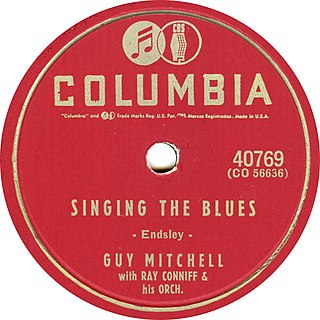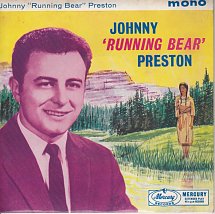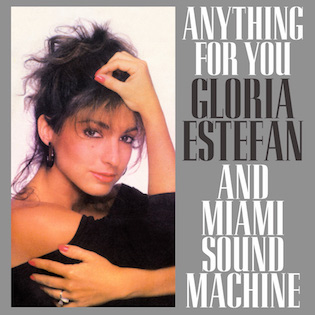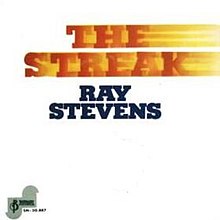
Harold Ray Ragsdale, known professionally as Ray Stevens, is an American country and pop singer-songwriter and comedian, known for his Grammy-winning recordings "Everything Is Beautiful" and "Misty", as well as comedic hits such as "Gitarzan" and "The Streak". He has worked as a producer, music arranger, songwriter, television host, and solo artist; been inducted into the Nashville Songwriters Hall of Fame, the Georgia Music Hall of Fame, and the Christian Music Hall of Fame; and received gold albums for his music sales.

"One Week" is a song by the Canadian rock band Barenaked Ladies that was released as the first single from their 1998 album, Stunt. It was written by Ed Robertson, who is featured on the lead vocal of the rapped verses. Steven Page sings lead on the song's chorus, while the two co-lead the prechoruses in harmony. The song is notable for its significant number of pop culture references, and it remains the band's best-known song in the United States. Coincidentally, when the song reached No. 1 on the Billboard Hot 100, it remained in the top spot for one week.

"Ahab the Arab" is a novelty song written and recorded by Ray Stevens in 1962.

"Dancing Machine" is a song recorded by American R&B outfit the Jackson 5, and was the title track of their ninth studio album. The song was originally recorded for the group's 1973 album G.I.T.: Get It Together and was released as a remix for a response to the success of the single.

"Islands in the Stream" is a song written and later recorded by the Bee Gees. It was sung by American country music artists Kenny Rogers and Dolly Parton. It was released in August 1983 as the first single from Rogers's album Eyes That See in the Dark. Named after the Ernest Hemingway novel, it was originally written for Marvin Gaye in an R&B style, only later to be changed for the Kenny Rogers album.

"Itsy Bitsy Teenie Weenie Yellow Polkadot Bikini" is a novelty song telling the story of a shy girl wearing a revealing polka dot bikini at the beach. It was written by Paul Vance and Lee Pockriss and first released in June 1960 by Brian Hyland, with orchestra conducted by John Dixon. The Hyland version reached number one on the Billboard Hot 100, selling a million copies in the US, and was a worldwide hit. The song has been adapted into French as "Itsy bitsy petit bikini" and into German as "Itsy Bitsy Teenie Weenie Honolulu-Strand-Bikini", reaching number one on national charts in both languages. Several versions of the song have proved successful in various European countries. In 1990 a version by British pop band Bombalurina, titled "Itsy Bitsy Teeny Weeny Yellow Polka Dot Bikini", reached number one on the UK Singles Chart and in Ireland.

"Singing the Blues" is a popular song written by Melvin Endsley and published in 1956. The song was first recorded and released by Marty Robbins in 1956. It is not related to the 1920 jazz song "Singin' the Blues" recorded by Frank Trumbauer and Bix Beiderbecke in 1927.

"You Don't Know Me" is a song written by Cindy Walker based on a title and storyline given to her by Eddy Arnold in 1955. "You Don't Know Me" was first recorded by Arnold that year and released as a single on April 21, 1956 on RCA Victor. The best-selling version of the song is by Ray Charles, who took it to number 2 on the Billboard Hot 100 chart in 1962, after releasing the song on his number 1 album Modern Sounds in Country and Western Music. The first version of the song to make the Billboard charts was by Jerry Vale in 1956, peaking at number 14 on the pop chart. Arnold's version charted two months later, released as an RCA Victor single, 47-6502, backed with "The Rockin' Mockin' Bird", which reached number 10 on the Billboard country chart. Cash Box magazine, which combined all best-selling versions at one position, included a version by Carmen McRae that never appeared in the Billboard Top 100 Sides listing.

"I Can't Stop Loving You" is a popular song written and composed by country singer, songwriter, and musician Don Gibson, who first recorded it on December 30, 1957, for RCA Victor Records. It was released in 1958 as the B-side of "Oh, Lonesome Me", becoming a double-sided country hit single. At the time of Gibson's death in 2003, the song had been recorded by more than 700 artists.

"Brandy", later called "Mandy", is a song written by Scott English and Richard Kerr. It was originally recorded by English in 1971 and reached the top 20 of the UK Singles Chart.

"Everything Is Beautiful" is a song written, composed, and performed by Ray Stevens. It has appeared on many of Stevens's albums, including one named after the song, and has become a pop standard and common in religious performances. The children heard singing the chorus of the song, using the hymn, "Jesus Loves the Little Children", are from the Oak Hill Elementary School in Nashville, Tennessee. This group includes Stevens's two daughters. The song was responsible for two wins at the Grammy Awards of 1971: Grammy Award for Best Male Pop Vocal Performance for Ray Stevens and Grammy Award for Best Inspirational Performance for Jake Hess. Stevens's recording was the Number 1 song on the Billboard Hot 100 for two weeks in the summer of 1970. The song also spent three weeks atop the adult contemporary chart. Many country stations played the song, with it peaking at number 39 on Billboard's chart. Billboard ranked the record as the No. 12 song of 1970. The song includes anti-racist and pro-tolerance lyrics such as "We shouldn't care 'bout the length of his hair/Or the color of his skin."

"Luv Me, Luv Me" is a song by Jamaican-American reggae singer Shaggy. It was first released on July 25, 1998 with Janet Jackson credited as a featured artist. The song was re-recorded in 2000 with Samantha Cole's vocals after Jackson's label withheld the song from being included on Shaggy's next album. It was released on May 31, 2001 as the third official single from his 2000 album Hot Shot.

"Smokin' in the Boys Room" is a song originally recorded by Brownsville Station in 1973 on their album Yeah!. It reached number 3 in Canada and on the US Billboard Hot 100, and was later certified by the RIAA.

"Running Bear" is a song written by Jiles Perry Richardson and sung most famously by Johnny Preston in 1959. The 1959 recording featured background vocals by Richardson, George Jones, and the session's producer Bill Hall, who provided the "Indian chanting" of "uga-uga" during the three verses, as well as the "Indian war cries" at the start and end of the record. It was No. 1 for three weeks in January 1960 on the Billboard Hot 100 in the United States. The song also reached No. 1 in the UK Singles Chart and New Zealand in 1960. Coincidentally, "Running Bear" was immediately preceded in the Hot 100 No. 1 position by Marty Robbins' "El Paso", another song in which the protagonist dies. Billboard ranked "Running Bear" as the No. 4 song of 1960.

"Under the Boardwalk" is a pop song written by Kenny Young and Arthur Resnick and recorded by The Drifters in 1964. It charted at number four on the Billboard Hot 100 chart on August 22, 1964. The song has since been covered by many other artists, with versions by Billy Joel, Bette Midler, Sam & Dave, the Tom Tom Club, The Rolling Stones, Billy Joe Royal, Bruce Willis, Bad Boys Blue, John Mellencamp and Lynn Anderson all charting in the United States or overseas. The song ranked #489 on Rolling Stone's list of The 500 Greatest Songs of All Time.

"Another Saturday Night" is the title of a 1963 hit single by Sam Cooke from the album Ain't That Good News. The song was written by Cooke while touring in England when staying in a hotel room where no female guests were allowed. It reached No. 10 on the Billboard Hot 100 and was No. 1 on the R&B chart for a single week. In the UK, the song peaked at No. 23 on the UK Singles Chart.
The discography of the American country, pop, and novelty artist Ray Stevens consists of 49 studio albums, 125 singles, 3 live albums, 67 compilation albums, 2 box sets, and 1 extended play. Stevens released his first single in 1957 and his first full album in 1962. Dozens of Stevens' singles have charted on the Billboard Hot Country Songs chart and two of them reached #1 on the Billboard Hot 100 chart: "The Streak" and "Everything Is Beautiful". The former and a cover of the jazz standard "Misty" are his biggest hits on the country charts.

"Anything For You" is a 1988 ballad written by American singer and songwriter Gloria Estefan and sung by Estefan and Miami Sound Machine. The song appeared on their 1987 album, Let It Loose. After years of fluctuating success in the United States, "Anything for You" marked a massive breakthrough for the group when it managed to top the Billboard magazine Hot 100 chart on May 14, 1988, and remained there for two weeks. It marked the peak of the band's success in the 1980s and was the first of three number-ones for the band. Due to the success of the re-release of this signature song and the previous re-release in October 1988 from the single, "Can't Stay Away from You", outside North America the album Let It Loose saw a re-release named after the single "Anything For You". The song also spent three weeks at #1 on the Adult Contemporary chart that same year. It also peaked at #3 on the Hot Latin Tracks on June 25, 1988. The A-side of the single contained a longer fade than the version on the album. The B-side of the single was a Spanglish version of the song, with Estefan alternating the verses and chorus between English and Spanish.

The "Theme from The Dukes of Hazzard" is a song written and recorded by American country music singer Waylon Jennings. It was released in August 1980 as the second single from the album Music Man. Recognizable to fans as the theme to the CBS comedy adventure television series The Dukes of Hazzard, the song became a #1 hit on the Billboard Hot Country Singles chart in 1980.

Boogity Boogity was Ray Stevens' eleventh studio album, released in 1974, as well as his sixth for Barnaby Records. For this album, Stevens returns to the genres of novelty and comedy. The album was released to capitalize on the success of his hit single "The Streak", which was inspired by the fad of streaking during that time period. Stevens' two songs, "Freddie Feelgood " and "Bagpipes That's My Bag," were taken from his album Gitarzan and were reissued on this album. The front of the album cover shows Stevens running in a blur, seemingly in the nude, and also contains the phrases "Woosh!!" and "Don't look Ethel!" the latter of which is part of the lyrics to the primary single of the album.


















